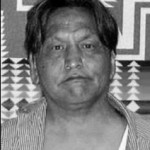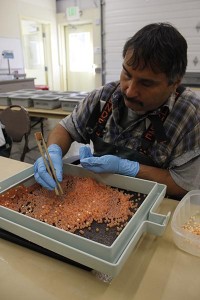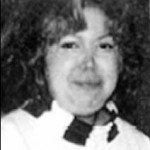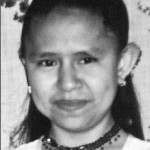www.mail.com, December 26, 2012
ANKATO, Minn. (AP) — Hundreds of people gathered Wednesday for the unveiling of a memorial to 38 Dakota men who were hanged 150 years ago to the day in what is the largest mass execution in U.S. history.
About 60 horse riders, including some tribe members who rode for 16 days from South Dakota, were among the roughly 500 people on hand for the dedication of the “Dakota 38” memorial, which marks a dark chapter in the history of the region and country. Dakota runners who departed from Fort Snelling also made it to the ceremony, which took place in Reconciliation Park in downtown Mankato, which is about 65 miles southwest of Minneapolis.
“Today, being here to witness a great gathering, we have peace in our hearts — a new beginning of healing,” said Arvol Looking Horse, the leader of the Dakota/Lakota tribe, according to The Free Press of Mankato (http://bit.ly/WHdMop ).
The Dec. 26, 1862, mass hanging marked the end of the U.S.-Dakota War of 1862, which took place along the Minnesota River valley that fall. Following the war, 1,600 Dakota were held at a camp at Fort Snelling until being sent out of state, and virtually all other Dakota fled Minnesota.
Originally, 303 men were sentenced to be hanged. President Abraham Lincoln was aware of injustices in the men’s trials, and also was urged to show compassion by Episcopal Bishop Henry Whipple. Lincoln reviewed all the cases and wrote a letter to Minnesota Gov. Alexander Ramsey, listing 39 men who should be hanged, including one who was later given a reprieve. Some Native Americans today feel Lincoln was wrong to order any of the hangings and that several of the men were innocent of any wrongdoing.
In August, Gov. Mark Dayton marked the 150th anniversary of the start of the war by asking Minnesotans to “remember the dark past” and by repudiating the actions of Ramsey, Minnesota’s second governor, who said after the war that the Dakota should be exterminated or driven from the state.
A traditional drum and song group on Wednesday sang a song composed for the 38 Dakota, to the pounding of a large drum. Mankato Mayor Eric Anderson read a proclamation declaring this the year of “forgiveness and understanding.”
Sidney Byrd, a Dakota/Lakota elder from Flandreau, S.D., read out in the Dakota language the names of the 38 men who were hanged. The names are inscribed on the monument, along with a poem and a prayer.
“I’m proud to be with you today. My great-grandfather was one of those who paid the supreme price for our freedom,” he said. Byrd’s great-grandfather was among the Dakota originally sentenced to death who were given reprieves by Lincoln. The men were sent from a prison in Mankato to one in Davenport, Iowa, where many died from squalid conditions.
The Dakota behind the new memorial and the ride and run have used the mantra “forgive everyone everything” to mark the 150th anniversary. Those words will be engraved in stone benches to be placed around the new memorial next summer.
“This is a great day, not only for the Dakota but for the city of Mankato,” said Bud Lawrence of Mankato, who helped start a reconciliation effort in the 1970s. State Rep. Dean Urdahl, R-Grove City, who co-chairs a state task force commemorating the Civil War and U.S.-Dakota War, said that while progress has been made through reconciliation and education, there remains a lack of understanding about what led up to the war and the problems that the Dakota suffered long afterward.
“Through understanding comes a healing that is still continuing today,” Urdahl said. Richard Milda, of the Crow Agency in Montana, was among a small group of riders who made the entire trip from Lower Brule, S.D., to Mankato. It’s the third year he’s taken part in the ride.
“I heard about the ride and was attracted to its message of forgiveness and remembrance,” Milda said.
 Clinton “Bodie” Kevin Sam was born February 6, 1962 in Everett, Wash. to William E. Sam Sr. and Carole B Allen. He went to be with his heavenly father December 15, 2012
Clinton “Bodie” Kevin Sam was born February 6, 1962 in Everett, Wash. to William E. Sam Sr. and Carole B Allen. He went to be with his heavenly father December 15, 2012







 www.weeklyvolcano.com, blogspot, December 26, 2012
www.weeklyvolcano.com, blogspot, December 26, 2012


